List of NASA aircraft
This is a list of NASA aircraft. Throughout its history NASA has used several different types of aircraft on a permanent, semi-permanent, or short-term basis. These aircraft are usually surplus, but in a few cases are newly built, military aircraft.
Aircraft
| Aircraft | Type | Use | Status (Qty) | Dates From To | Research Centers | Current Location | Comments |
|---|---|---|---|---|---|---|---|
Aero Spacelines Super Guppy
 |
Fixed Wing | Heavy transport aircraft | Active (1) | N/A | El Paso Forward Operating Location | ||
| Aerojet General X-8 |
Rocket | Research, X-Planes, Upper air research and sounding[1] | Retired | Dryden Flight Research Center | |||
AeroVironment Centurion
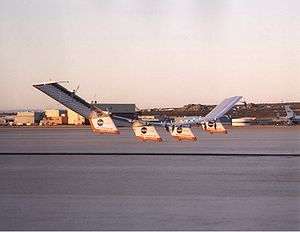 |
Fixed Wing, UAV | Research, Environmental Research Aircraft and Sensor Technology (ERAST) | Retired (1) | Ames Research Center, Dryden Flight Research Center | Centurion was an evolutionary solar and fuel cell system powered unmanned aircraft. | ||
AeroVironment Gossamer Albatross
 |
Fixed Wing | Research, Human Powered | Retired (1) | Smithsonian National Air and Space Museum | |||
AeroVironment Helios
 |
Fixed Wing, UAV | Research, Environmental Research Aircraft and Sensor Technology (ERAST) | Retired (1) | Ames Research Center, Dryden Flight Research Center | NASA's Helios Prototype was an evolutionary solar and fuel cell system powered unmanned aircraft. | ||
AeroVironment Pathfinder
 |
Fixed Wing, UAV | Research, Environmental Research Aircraft and Sensor Technology (ERAST) | Retired (1) | Ames Research Center, Dryden Flight Research Center | AeroVironment Pathfinder Prototype was an evolutionary solar and fuel cell system powered unmanned aircraft. | ||
AeroVironment Pathfinder Plus
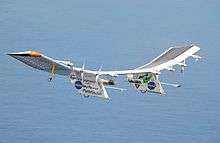 |
Fixed Wing, UAV | Research, Environmental Research Aircraft and Sensor Technology (ERAST) | Retired (1) | Ames Research Center, Dryden Flight Research Center | Smithsonian National Air and Space Museum | Pathfinder Plus Prototype was an evolutionary solar and fuel cell system powered unmanned aircraft. | |
AeroVironment RQ-14 Dragon Eye
 |
Fixed Wing, UAV | Research Platform, Airborne Science Program | Active (1) | Ames Research Center | Ames Research Center | ||
Beechcraft Super King Air (NASA 8)
 |
Fixed Wing | Transport Personnel | Active (1) | Wallops Flight Facility | Wallops Flight Facility | Carries employees from Wallops Flight Facility, Virginia and Baltimore | |
Beechcraft King Air B-200 (UC-12B)
 |
Fixed Wing | Research Platform, Airborne Science Program | Active (2) | Dryden Flight Research Center, Langley Research Center | Dryden Flight Research Center, Langley Research Center | ||
Beechcraft T-34C
 |
Fixed Wing | Research Platform & Photographic Chase | Active (2) | Glenn Research Center, Dryden Flight Research Center | Wallops Flight Facility, Dryden Flight Research Center | ||
Bell UH-1H Iroquois (Huey)
 |
Rotorcraft | Active (1) | Wallops Flight Facility | Wallops Flight Facility | |||
Bell Lunar Landing Research Vehicle LLRV  |
Retired | Dryden Flight Research Center | Dryden Flight Research Center (#2) | ||||
Bell X-1A Glamorous Glennis 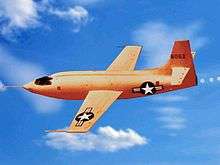 |
Research, X-Planes, | Retired | 1946 | Dryden Flight Research Center | National Air and Space Museum | High-speed and high-altitude testing.First aircraft to break the sound barrier in level flight.Proved aerodynamic viability of thin wing sections.[2] | |
| Bell X-1B | Research, X-Planes, | Retired | Dryden Flight Research Center | National Museum of the United States Air Force | |||
| Bell X-1E | Research, X-Planes, | Retired | Dryden Flight Research Center | Dryden Flight Research Center | |||
Bell X-5  |
Research, X-Planes, | Retired | 1951 | Dryden Flight Research Center | National Museum of the United States Air Force | First aircraft to fly with variable geometry wings.[3] | |
Bell XV-15
 |
V/STOL, Tilt Rotor | Research, | Retired (1) | Ames Research Center | Steven F. Udvar-Hazy Center | ||
Bellanca Skyrocket II
 |
Fixed Wing | Civil Aircraft Test | Retired (1) | Langley Research Center | |||
Boeing 737, NASA 515
 |
Fixed Wing | Research, Terminal Area Productivity (TAP) | Retired (1) | Museum of Flight | Langley Research Center | NASA 515 is the first Boeing 737 ever built. After being used to qualify the 737 design, NASA heavily modified the aircraft for continuing research. | |
Boeing 747-100SR
 |
Fixed Wing | Shuttle Carrier Aircraft | Retired (2) | Dryden Flight Research Center | Dryden Flight Research Center | Registered as N905NA (which is a 747-100 model that was acquired from American Airlines in 1974) and N911NA (a 747-100SR model purchased from Japan Airlines in 1988). In 2013, Space Center Houston announced plans to display SCA 905 with the mockup shuttle Independence mounted on its back. NASA 905 was erected on site at the space center, having been ferried in pieces from Ellington Field, and the replica shuttle was mounted in August 2014. The display is scheduled to open in 2015. | |
Boeing 757
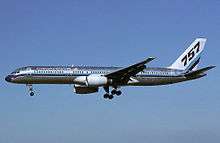 |
Fixed Wing | Research Platform, Advanced technology | Active (1) | Ex–Eastern Airlines 757 | |||
Boeing 747, (SOFIA)
 |
Fixed Wing | Airborne observatory, Stratospheric Observatory for Infrared Astronomy (SOFIA) | Active (1) | Ames Research Center, Dryden Flight Research Center | Dryden Flight Research Center | ||
Boeing B-52B 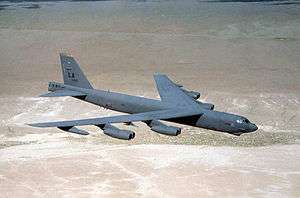 |
Retired | Dryden Flight Research Center | Pima Air & Space Museum (003), Air Force Flight Test Center Museum (008) | X-15 & X-43A launch from Boeing B-52 mothership | |||
Boeing CH-47B Chinook
.jpg) |
Rotorcraft | Research, Variable Stability Research Rotorcraft project | Retired (2) | Ames Research Center, Langley Research Center | It was equipped to fly by wire and had three on board computers. After research was completed, it was returned to the US Army and upgraded to the CH–47D standard.[4] | ||
Boeing KC–135 Stratotanker
 |
Fixed Wing | Trainer, Reduced gravity aircraft | Retired (2) | 1973 - 2004 | Ellington Field, Houston, Texas | Ellington Field, Houston, Texas | USAF KC–135As (designated N930NA and N931NA) Potential astronauts were exposed to simulated near–weightlessness. These aircraft are also known as Vomit Comets. |
Boeing NB-52B, NASA NB-52B
 |
Fixed Wing | Research, Test Platform | Retired (1) | Ames Research Center, Dryden Flight Research Center | Edwards Air Force Base | Used as a mothership for the X-15 program, 127 Lifting body flight tests such as the HL-10 test flight, to support development in the Space Shuttle program, and several other miscellaneous test programs.[5] After almost 50 years flying service the Balls 8 was retired from active service with NASA on December 17, 2004, following its participation in the Hyper-X program.[6] | |
Boeing X-37  |
Research, X-Planes, | Retired | 2006 (drop test), 2010 (orbital flight) | Dryden Flight Research Center | Reusable orbital spaceplane.[7] | ||
| Boeing X-40 |
Research, X-Planes, | Retired | 1998 | Dryden Flight Research Center | 80% scale Space Maneuver Vehicle testbed.X-37 prototype.[8] | ||
Boeing X-48
.jpg) |
Fixed Wing, UAV | Research, X-Planes, Environmentally Responsible Aviation Project [9] | Retired (1) | Dryden Flight Research Center | X-48 series was utilized to "evaluate the low-speed stability and control of a low-noise version of a notional hybrid-wing-body design." NASA is hoping that this particular aircraft will aid in the design "green airlines." Blended Wing Body (BWB) testbed.[10] | ||
Boeing X-45A  |
Fixed Wing, UAV | Research, X-Planes, | Retired | Dryden Flight Research Center | National Air and Space Museum (#1 Blue), National Museum of the United States Air Force (#2 Red) | ||
X-53 Boeing Phantom Works  |
Research, X-Planes, | Retired | 2002 | Dryden Flight Research Center | Active Aeroelastic Wing testbed.[11] | ||
Boeing Vertol VZ-2 (Model 76)
_NASA_GPN-2000-001732.jpg) |
V/STOL, Tilt Rotor | Research, | Retired (1) | Ames Research Center, Dryden Flight Research Center | Smithsonian National Air and Space Museum Paul E. Garber Facility.[12] | Built in the United States in 1957 to investigate the tiltwing approach to vertical take-off and landing. | |
Cessna 206H
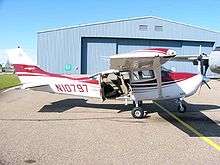 |
Fixed Wing | Research Platform, Airborne Science Program | Active (1) | Langley Research Center | Langley Research Center | ||
| Cessna 337 Skymaster | Fixed Wing | Civil Aircraft Test, Small Aircraft Transportation System | Retired (1) | Langley Research Center | |||
Cessna 318 T-37 Tweet
 |
Fixed Wing | Civil Aircraft Test, Small Aircraft Transportation System | Retired (1) | Langley Research Center | |||
Convair 880
 |
Fixed Wing | Research, Controlled Impact Demonstration Program | Retired (1) | Ames Research Center, Langley Research Center, Dryden Flight Research Center | |||
Convair 990 (Galileo)
 |
Fixed Wing | Airborne observatory, Galileo Observatory | Retired (1) & Crashed (1) | Ames Research Center, Dryden Flight Research Center | Mojave Air and Space Port | The Galileo I aircraft was lost in a mid-air collision in 1973 with a P-3. The Galileo II continued service into the 1980s providing research into aeronautics, astronautics, astronomy, and earth observations | |
| Convair F–106 Delta Dart (QF–106A)
|
Fixed Wing | Retired | 1986 - 1998 | Langley Research Center | |||
| Cirrus SR22
|
Fixed Wing | Civil Aircraft Test, Small Aircraft Transportation System | Retired (1) | Langley Research Center | |||
| Convair C-131 Samaritan (Convair CV-240)
|
Fixed Wing | Training, Reduced gravity aircraft, Landsat Earth Resources Survey program (ERS) | Retired (2) | Langley Research Center, Ellington Field, Houston, TX | Project Mercury astronauts flew aboard a C-131 Samaritan flying as the "vomit comet | ||
| Dassault HU-25C Falcon
|
Fixed Wing | Research Platform, Airborne Science Program | Active (1) | Langley Research Center | Langley Research Center | ||
| de Havilland Canada DHC-5 Buffalo (Bisontennial) named in 1976
|
Fixed Wing | Research, STOL | Retired (1) | 1970s late - early 1980s | Ames Research Center | Fitted with a short-span Boeing wing incorporating split-flow turbofan engines based on the Rolls-Royce Spey (providing both propulsion and augmentor airflow for the powered lift system).[13][14][15][16] Beginning in 1972 with its first flight in this experimental configuration, this aircraft was used jointly by the NASA Ames Research Center and the Canadian Department of Industry, Trade and Commerce for STOL research.[15][17] | |
de Havilland Canada DHC-5 Buffalo (QSRA)
 |
Fixed Wing | Research, STOL, Quiet Short-Haul Research Aircraft program.[13][14][18]:153[19][20][21] | Retired (1) | 1970s late - early 1980s | Ames Research Center, Dryden Flight Research Center | The experimental wing was designed, fabricated and installed by Boeing was a swept, supercritical design incorporating a boundary layer control system.[19][20]:8 Instead of the standard engines, this aircraft was powered by four prototype Avco Lycoming YF102 high-bypass turbofan engines (originally from the Northrop YA-9 program) mounted above the wing to take advantage of the Coandă effect.[20]:9–10 In 1980, this aircraft participated in carrier trials aboard USS Kitty Hawk, demonstrating STOL performance without the use of catapults or arrestor gear.[14][18]:154 | |
de Havilland Canada DHC-6 Twin Otter
 |
Fixed Wing | Research, aircraft icing | Glenn Research Center [22] | ||||
Doak VZ-4
 |
VTOL | Research | Retired (1) | Langley Research Center | U.S. Army Transportation Museum | ||
Douglas D-558-1 Skyrocket  |
Retired | Dryden Flight Research Center | National Museum of Naval Aviation (#1), Carolinas Aviation Museum (#3) | ||||
| Douglas D-558-2 Skyrocket | Retired | Dryden Flight Research Center | Planes of Fame Museum (#1), National Air and Space Museum (#2), Antelope Valley College (#3) | ||||
Douglas DC-3
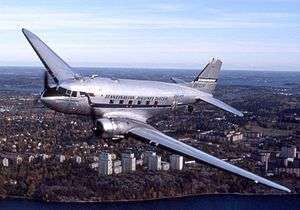 |
Fixed Wing | Test | Retired | Ames Research Center | |||
Douglas C-118 Liftmaster
 |
Fixed Wing | Wallops Flight Facility | |||||
Douglas C-133 Cargomaster
 |
Fixed Wing | Heavy Transport Aircraft | Retired (?) | Goleta Air Museum | |||
Douglas DC-8
 |
Fixed Wing | Research Platform, Airborne Science Program | Active (1) | National Suborbital Education and Research Center (NSERC), University of North Dakota | Dryden Flight Research Center | ||
Douglas F5D Skylancer
 |
Fixed Wing | Trainer, Chase Plane | Retired (2) | 1961 - 1970 | Dryden Flight Research Center | Neil Armstrong Air and Space Museum (802), Ontario Municipal Airport (708) | Used as a testbed for supersonic research and to train pilots for the X-20 Dyna-Soar program. The F5D-1 Skylancer had a wing planform similar to the proposed design for Dyna-Soar. After the Dyna-Soar program was canceled in December 1963, one F5D-1 stayed on at Dryden, eventually becoming a flight simulator for the M2-F2, and a chase plane for experimental flights until 1970. In May 1970 one of the aircraft was retired and donated to the Neil Armstrong Air and Space Museum.[23] |
Douglas X-3 Stiletto
 |
Fixed Wing | Research, X-Planes | Retired (1) | 1952-1956 | Dryden Flight Research Center | National Museum of the United States Air Force | Titanium alloy construction; low aspect ratio wings. Planned to test long-duration high-speed flight. Incapable of reaching design speed, but provided insights into inertia coupling.[24] |
Dyke Delta
 |
Fixed Wing | ||||||
Eiri-Avion PIK-20
 |
Fixed Wing, Sailplane | Research, Lift & Aerodynamics | Retired (1) | 1981-1996 | Dryden Flight Research Center | ||
General Atomics ALTUS
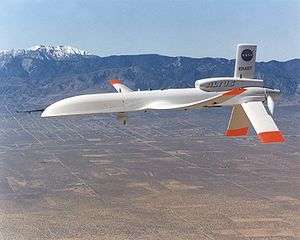 |
Fixed Wing, UAV | Research, Environmental Research Aircraft and Sensor Technology (ERAST) | Dryden Flight Research Center | ||||
General Atomics MQ-9 Reaper (Predator-B IKHANA)
 |
Fixed Wing, UAV | Research Platform | Active (1) | Dryden Flight Research Center | Dryden Flight Research Center | ||
General Dynamics F–16 Fighting Falcon
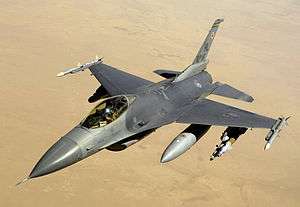 |
Fixed Wing | Research, | Retired (2) | 1988 - 1999 | Dryden Flight Research Center | Prototypes of the F–16XL, designed as a competitor to the F-15E Strike Eagle in the USAF's Enhanced Tactical Fighter program | |
General Dynamics F-16 VISTA
 |
Fixed Wing | Research, Variability in flight simulator aircraft | Retired (1) | Langley Research Center | |||
General Dynamics F-16XL
 |
Fixed Wing | Research, | Retired (2) | Dryden Flight Research Center, Langley Research Center | Dryden Flight Research Center (1) | ||
Grumman Gulfstream I
 |
Fixed Wing | Johnson Space Center | |||||
| Grumman X-29
|
Fixed Wing | Research, X-Planes, Forward swept wing | Retired (2) | 1984-1991 | Dryden Flight Research Center | National Museum of the United States Air Force | |
Grumman Gulfstream II
 |
Fixed Wing | Shuttle Training Aircraft (STA) | Active (4) | NA | El Paso Forward Operating Location, Ellington Field, Houston, Texas[25] (NASA C-11A) | ||
Gulfstream G-III
 |
Fixed Wing | Research Platform, Research Platform, Airborne Science Program, Unmanned Air Vehicle Synthetic Aperture Radar (UAVSAR) | Active (1) | 2003 - Today | Jet Propulsion Laboratory, Dryden Flight Research Center | Dryden Flight Research Center (NASA C–20A) | Acquired from the United States Air Force and modified by Dryden Flight Research Center. The aircraft was equipped with a self-contained on-board Data Collection and Processing System (DCAPS), which allows for automated configuration setups thereby reducing engineering costs for each flight. The aircraft has been used by the Uninhabited Aerial Vehicle Synthetic Aperture Radar (UAVSAR) program, the Access 5 program alongside Scaled Composites Proteus aircraft, and as a test bed to develop collision avoidance systems and procedures.[26] |
Gulfstream G-III, NASA one
 |
Fixed Wing | Business jet of the NASA Administrator | Active (1) | 2003 - 2008 | NA | NASA one was a Gulfstream G-III with a seating capacity of 12 people. The jet is stored in an FAA hangar along with 3 other government planes.[27] NASA now shares a plane with FAA. | |
| Gulfstream X-54 | Research, X-Planes, | Proposed | Dryden Flight Research Center | ||||
Hawker Siddeley P.1127
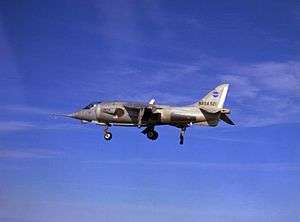 |
V/STOL | Retired | Langley Research Center | ||||
| Kreider-Reisner XC-31
|
Fixed Wing | Research, DeIcing | Retired (1) | Langley Research Center | |||
Learjet 23
 |
Fixed Wing | Business jet | |||||
Learjet 24
 |
Fixed Wing | Business jet | Ames Research Center, Dryden Flight Research Center | Lear Jet Airborne Observatory[28][29] | |||
| Learjet 25
|
Fixed Wing | Business jet | Active | Wallops Flight Facility | Wallops Flight Facility | ||
Learjet 28
 |
Fixed Wing | Business jet | |||||
Ling–Temco–Vought LTV XC–142
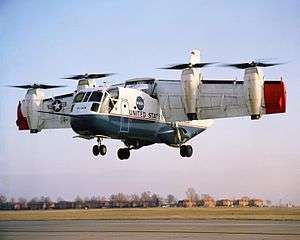 |
V/STOL, Tilt Wing | Research, Transport aircraft | Retired (1) | 1966-1970 | Langley Research Center | ||
Lockheed F-104A Starfighter 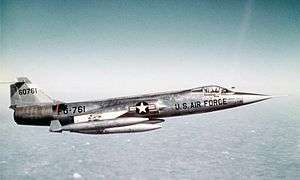 |
Retired | Dryden Flight Research Center | National Air and Space Museum (818) (N818NA), Air Force Flight Test Center Museum (N820NA) (0790) | ||||
| Lockheed F-104B Starfighter | Retired | Dryden Flight Research Center | McClellan AFB (N819NA) | ||||
| Lockheed F-104G Starfighter | Retired | Dryden Flight Research Center | Estrella Warbird Museum (N824NA), Dryden Flight Research Center (N826NA) | ||||
Lockheed C-5 Galaxy
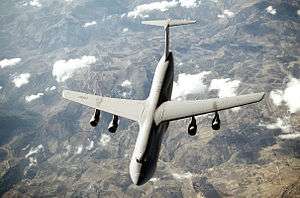 |
Fixed Wing | Heavy transport aircraft | Active (2) | Flown by USAF crews. | |||
Lockheed C-121 Starliner
 |
Fixed Wing | Active | |||||
Lockheed C-141A Starlifter
 |
Fixed Wing | Airborne observatory, Kuiper Airborne Observatory | Retired (1) | 1974 - 1995 | NASA Ames Research Center | ||
Lockheed JetStar
 |
Fixed Wing | Research Platform | Retired (1) | 1964-1989 | Dryden Flight Research Center | ||
Lockheed NC-130B Hercules
 |
Fixed Wing | Research Platform, Landsat Earth Resources Survey program (ERS) | Active (1) | Wallops Flight Facility | Wallops Flight Facility | ||
| Lockheed F-104N Starfighter | Fixed Wing | Chase | Retired (6) & Crashed (1) | 1963 - 1995 | Dryden Flight Research Center | Embry-Riddle Aeronautical University (N811NA) (4045), Lockheed Martin, Palmdale, CA (N812NA) | One of these aircraft, piloted by Joe Walker, collided with the XB-70 Valkyrie experimental bomber on June 8, 1966, killing Walker. |
Lockheed P–3 Orion
 |
Fixed Wing | Research Platform, Airborne Science Program | Active (1) | Wallops Flight Facility | Wallops Flight Facility | ||
Lockheed S–3 Viking
 |
Fixed Wing | Research Platform | Active | Glenn Research Center | |||
Lockheed SR-71
 |
Fixed Wing | Trainer | Retired (1) | 1991 - 1999 | Dryden Flight Research Center | Pima Air Museum | The plane was permanently retired in 1998, and the Air Force quickly disposed of their SR-71s, leaving NASA with the last two airworthy Blackbirds until 1999.[30] All other Blackbirds have been moved to museums except for the two SR-71s and a few D-21 drones retained by the NASA Dryden Research Center.[31] |
| Lockheed SR-71A Blackbird | Fixed Wing | Trainer | Retired (1) | 1991 - 1999 | Dryden Flight Research Center | Dryden Flight Research Center | The plane was permanently retired in 1998, and the Air Force quickly disposed of their SR-71s, leaving NASA with the last two airworthy Blackbirds until 1999.[30] All other Blackbirds have been moved to museums except for the two SR-71s and a few D-21 drones retained by the NASA Dryden Research Center.[31] |
| Lockheed SR-71B Blackbird | Fixed Wing | Trainer | Retired (1) | 1991 - 1999 | Dryden Flight Research Center | Kalamazoo Aviation History Museum | The plane was permanently retired in 1998, and the Air Force quickly disposed of their SR-71s, leaving NASA with the last two airworthy Blackbirds until 1999.[30] All other Blackbirds have been moved to museums except for the two SR-71s and a few D-21 drones retained by the NASA Dryden Research Center.[31] |
Lockheed U-2 "Dragon Lady"
 |
Fixed Wing | Research Platform, Airborne Science Program, Landsat Earth Resources Survey program (ERS), High Altitude | Active (2) | Dryden Flight Research Center | Modified to the ER-2 (Earth Resources-2) standard | ||
Lockheed YF-12
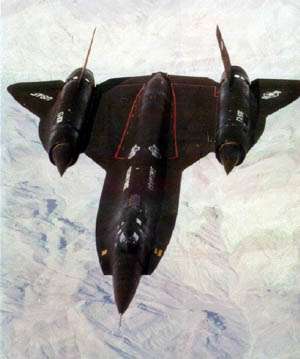 |
Fixed Wing | Research, | Retired (1) | Dryden Flight Research Center, Langley Research Center, Glenn Research Center | National Museum of the United States Air Force | ||
Lockheed YO–3 Quiet Star
 |
Fixed Wing | Research | Retired (1) | Dryden Flight Research Center | |||
X-33 Venture Star  |
Research, X-Planes, | Retired (1) | Prototype never completed | Lockheed Martin | Half-scale reusable launch vehicle prototype.[32] | ||
| Lockheed Martin X-44 MANTA | Research, X-Planes, | Retired | Cancelled | Dryden Flight Research Center | F-22-based Multi-Axis No-Tail Aircraft thrust vectoring testbed.[33] | ||
Lockheed Martin X-56 (MUTT)  |
Fixed Wing, UAV | Research Platform, X-Planes, Multi-Utility Technology Testbed | Retired (1) | 2012 | Dryden Flight Research Center | Active flutter suppression and gust load alleviation technology for potential use in future high-altitude, long-endurance (HALE) reconnaissance aircraft.[34] | |
Martin WB–57 Canberra
 |
Fixed Wing | Research Platform - Airborne Science Program, Landsat Earth Resources Survey program (ERS) High Altitude | Active (3) | Lyndon B. Johnson Space Center | Lyndon B. Johnson Space Center | Earth Resources Technology Satellite program (ERTS), Cirrus Regional Study of Tropical Anvils and Cirrus Layers - Florida Area Cirrus Experiment (CRYSTAL - FACE) and Clouds and Water Vapor in the Climate System (CWVCS) | |
Martin-Marietta X-24A  |
Research, X-Planes, | Retired | Dryden Flight Research Center | National Museum of the United States Air Force | Low-speed lifting body handling testbed.Lifting body aerodynamic shape trials.[35] | ||
Martin-Marietta X-24B  |
Research, X-Planes, | Retired | 1973 | Dryden Flight Research Center | National Museum of the United States Air Force | Low-speed lifting body handling testbed.Lifting body aerodynamic shape trials.[35] | |
McDonnell 188 (Breguet 941)
 |
STOL | Retired (1) | Dryden Flight Research Center, Langley Research Center | ||||
McDonnell Douglas F/A-18 HARV
 |
Fixed Wing | Research, High Alpha Research Vehicle | Retired | Dryden Flight Research Center | Virginia Air and Space Center (840NA) | ||
McDonnell Douglas DC-9
 |
Fixed Wing | Research Platform, Airborne Science Program | Active (1) | Johnson Space Center | |||
McDonnell Douglas F-15A RPRV/SRV  |
Retired | Dryden Flight Research Center | Dryden Flight Research Center | ||||
McDonnell Douglas F/A-18 Hornet (842NA)
 |
Fixed Wing | Research | Retired | Dryden Flight Research Center | Clear Channel Stadium | ||
McDonnell Douglas C-9 Skytrain II
 |
Fixed Wing | Training, Reduced gravity aircraft | Active (1) | 2005 - TBD | Johnson Space Center | Ex-USN C-9B | |
| McDonnell Douglas F-4 Phantom II
|
Fixed Wing | Chase Plane | Retired | Dryden Flight Research Center, Langley Research Center | X-15 program, Lifting body flights (also collected biomedical data and used to see if sonic booms could be used as a weapon) | ||
McDonnell Douglas F-15 Eagle
 |
Fixed Wing | Research Platform, advanced propulsion concepts | Active (1), Retired (1) | 1993 – 1999 and IFCS programs 2002 – TBD | Dryden Flight Research Center | Dryden Flight Research Center F-15S/MTD | |
| McDonnell Douglas F-15B | Retired | Dryden Flight Research Center | Dryden Flight Research Center (837) | The F-15B research aircraft (tail number 837), the first two-seat F-15 built by McDonnell Douglas, was used initially for developmental testing and evaluation. | |||
McDonnell Douglas X-36  |
Research, X-Planes, | Retired | 1997 | Dryden Flight Research Center | National Museum of the United States Air Force | 28% scale tailless fighter testbed.[36] | |
McCulloch J-2
 |
Rotorcraft | Civil Test | 1973 | Langley Research Center | |||
Micro Craft X-43 Hyper-X  |
Research, X-Planes, | Retired | 2001 | Dryden Flight Research Center | Scramjet hypersonic testbed (Mach 9.68) (110,000 ft).[37] | ||
MIT Daedalus
 |
Fixed Wing | Research, Human Powered | Retired (1) | 1988 | Dryden Flight Research Center | Museum of Science (Boston) | |
NASA AD-1
 |
Fixed Wing | Research, Oblique Wing | Retired (1) | 1979 - 1982 | Ames Research Center, Dryden Flight Research Center | Hiller Aviation Museum | Successfully demonstrated an aircraft wing that could be pivoted obliquely from zero to 60 degrees during flight.[38] |
NASA Hyper III
 |
Fixed Wing, UAV | Retired (1) | Dryden Flight Research Center | ||||
NASA Mini-Sniffer
 |
Fixed Wing, UAV | Research, atmosphere, high altitude | Retired (3) | 1975 - 1982 | Langley Research Center, Dryden Flight Research Center | ||
NASA M2-F1
 |
Fixed Wing | Model | Retired (1) | Ames Research Center, Dryden Flight Research Center | Dryden Flight Research Center | The NASA M2-F1 was a lightweight, unpowered prototype aircraft, developed to flight test the wingless Lifting body concept. It looked like a "flying bathtub," and was designated the M2–F1, the "M" referring to "manned" and "F" referring to "flight" version. In 1962, NASA Dryden management approved a program to build a lightweight, unpowered Lifting body prototype. It featured a plywood shell placed over a tubular steel frame crafted at Dryden. Construction was completed in 1963.[39] | |
NASA Paresev
 |
Fixed Wing, Paraglider | Research, Space Capsule Safety (1) | Retired (4) | 1961 - 1965 | Smithsonian National Air and Space Museum | Was designed to study the ability of the Rogallo wing, also called Parawing, to descend a payload such as the Gemini space capsule safely from high altitude to ground.[40][41] Specifically, the Paresev was a test vehicle used to learn how to control this paraglider for a safe landing at a normal airfield. | |
NASA X-43
 |
Fixed Wing, UAV | Research, X-Planes | Retired (3) | Langley Research Center, Dryden Flight Research Center | |||
North American AJ Savage
 |
Fixed Wing | Trainer, Reduced gravity aircraft | Retired (3) | 1960 - TBD | |||
North American F-82 Twin Mustang
 |
Fixed Wing | Research, Handling & Performance | Retired (1) | Langley Research Center | |||
| North American F-86 Sabre
|
Fixed Wing | Chase | Retired | Dryden Flight Research Center | |||
North American F-100 Super Sabre
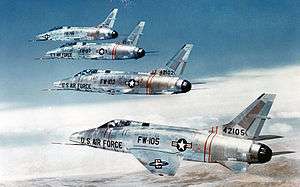 |
Fixed Wing | Retired | Dryden Flight Research Center | ||||
| North American OV-10 Bronco
|
Fixed Wing | Research, Noise & Wave Turbulence | Retired | Langley Research Center | |||
North American X-15 (Rocket plane)
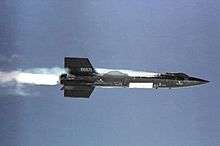 |
Fixed Wing | Research, X-Planes, Hypersonic Flight | Retired (1) | 1959 - 1968 | Dryden Flight Research Center | Smithsonian National Air & Space Museum | Conceived by NACA, three were built and explored the regime of hypersonic flight, often regarded as a direct predecessor to the Space Shuttle |
North American X-15A-2  |
Retired | Dryden Flight Research Center | National Museum of the United States Air Force | ||||
North American XB-70A Valkyrie
_Photo_taken_at_Wright-Patterson_AFB_061122-F-1234P-011.jpg) |
Fixed Wing | Research, | Retired (1), Crashed (1) | 1965 - 1969 | Ames Research Center, Dryden Flight Research Center | National Museum of the United States Air Force | NASA participated heavily in the design and testing of the XB-70 Valkyrie in the mid to late 1960s. NASA and the United States Air Force had a joint agreement to use the second XB–70A prototype for high–speed research flights in support of the proposed SST program. These plans went awry on June 8, 1966, when the second XB–70 crashed following a midair collision with NASA's F–104N chase plane. After 33 research flights following the mid–air collision, the remaining XB–70A was flown to Wright-Patterson Air Force Base on February 4, 1969 for museum display.[42] |
North American YF-93
 |
Fixed Wing | Research, | Retired (2) | Ames Research Center, Dryden Flight Research Center | |||
North American F-107  |
Retired | Dryden Flight Research Center | Pima Air and Space Museum (#1) (55-5118) | ||||
Northrop HL-10
 |
Fixed Wing | Research, Lifting body | Retired (1) | Ames Research Center, Dryden Flight Research Center | Dryden Flight Research Center | ||
Northrop M2-F2
 |
Fixed Wing | Research, Lifting body | Retired (1) | Ames Research Center, Dryden Flight Research Center | |||
Northrop M2-F3
 |
Fixed Wing | Research, Lifting body | Retired (1) | Ames Research Center, Dryden Flight Research Center | Smithsonian National Air and Space Museum | ||
Northrop T-38 Talon
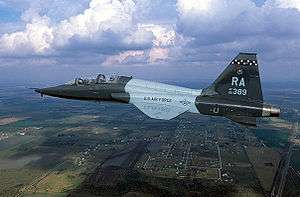 |
Fixed Wing | Trainer | Active, Retired | 1960s - Today | El Paso Forward Operating Location, Ellington Field, Houston, Texas | Used as a jet trainer for its astronauts since the 1960s. | |
Northrop X-4 Bantam  |
Research, X-Planes, | Retired | 1948 | Dryden Flight Research Center | Air Force Flight Test Center Museum#Air Force Flight Test Museum | Evaluated handling characteristics of tailless aircraft in the transonic speed region.[43] | |
Northrop-Grumman F-5E modified
 |
Fixed Wing | Research, Shaped Sonic Boom Demonstration (SSBD) | Retired (1) | 2003-2007 | Dryden Flight Research Center, Langley Research Center | Valiant Air Command Warbird Museum | The Shaped Sonic Boom Demonstration was a two-year program that used an F-5E with a modified fuselage in order to demonstrate that the aircraft's shockwave, and accompanying sonic boom, can be shaped and thereby reduced.[44] |
Northrop Grumman RQ-4 Global Hawk  |
Fixed Wing, UAV | Research Platform, Airborne Science Program | Active (2) | Dryden Flight Research Center | Dryden Flight Research Center | ||
Orbital Sciences X-34  |
Fixed Wing | Research, X-Planes, | Retired | Never flew | National Museum of the United States Air Force | Reusable unmanned space plane testbed.[45] | |
OMAC Laser 300
 |
Fixed Wing | Civil Test | Retired (3) | Langley Research Center | |||
Piper PA-30 Twin Comanche  |
Retired | Dryden Flight Research Center | Kings River Community College (808NA) | ||||
Pitcairn PAA-1
 |
V/STOL | Research, | Retired (1) | Langley Research Center | |||
Rockwell RPRV-870 HiMAT
 |
Fixed Wing, UAV | Research, Highly Maneuverable Aircraft Technology | Retired (2) | Ames Research Center, Dryden Flight Research Center | Smithsonian National Air and Space Museum | ||
| Rockwell-MBB X-31
|
Fixed Wing | Research, X-Planes, Enhanced Fighter Maneuverability (EFM) | Retired (1), Crashed (2) | Dryden Flight Research Center, European Aeronautic, Defense and Space Company | Oberschleißheim Museum (part of the Deutsches Museum) | ||
Rutan VariEze
 |
Fixed Wing | Research, Civil Air | Active | Langley Research Center | |||
Ryan VZ-3 Vertiplane
 |
VTOL | Experimental VTOL aircraft | Retired (1) | Moffett Federal Airfield | United States Army Aviation Museum | ||
Ryan XV–5 Vertifan
 |
V/STOL | Research, Rescue Research | Retired (1) | Ames Research Center | United States Army Aviation Museum | ||
Scaled Composites X-38  |
Research, X-Planes, | Retired (2) | 1999 | Dryden Flight Research Center | Evergreen Aviation & Space Museum (V-131), Strategic Air and Space Museum(V-132) | Lifting body Crew Return Vehicle demonstrator.[46] | |
Systems Integration Evaluation Remote Research Aircraft (SIERRA)
 |
Fixed Wing, UAV | Research Platform, Airborne Science Program | Crashed (1) | Ames Research Center | Lost at Sea | ||
Schweizer X-26 Frigate  |
Research, X-Planes, | Retired | 1967 | Dryden Flight Research Center | National Soaring Museum (1-36) | Training glider for yaw-roll couplingQuiet observation aircraft testbed.[47] | |
Sikorsky CH-54 Tarhe
 |
Rotorcraft | Utility | Retired (1) | Langley Research Center | |||
Sikorsky H-19
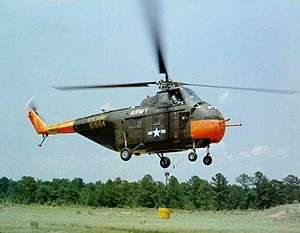 |
Rotorcraft | Utility | Retired (1) | Langley Research Center | |||
Sikorsky S-72, RSRA
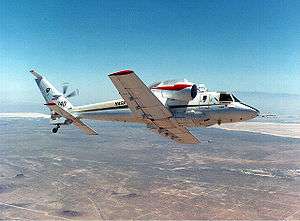 |
V/STOL | Research, | Retired (2) | 1979-? | Ames Research Center, Dryden Flight Research Center | RSRA, Rotor Systems Research Aircraft | |
Vought F–8 Crusader (Fly by Wire)
.jpg) |
Fixed Wing | Research Platform, Digital Fly–By–Wire Control System | Retired (1) | 1970s | Dryden Flight Research Center | Dryden Flight Research Center | Technology has become standard on modern high performance military aircraft. |
Vought F–8 Crusader (Supercritical wing)
.jpg) |
Fixed Wing | Research Platform, Supercritical wing | Retired (1) | 1970s | Dryden Flight Research Center | Dryden Flight Research Center | Technology has become standard on modern high performance military aircraft. |
Vought XF8U–3 Crusader III
 |
Fixed Wing | Research, Atmospheric Platform | Retired (3) | 1958-? | |||
| eXperimental Sensor-Controller Aerial Vehicle (XSCAV) | Fixed Wing, UAV | Research Platform, Airborne Science Program | Active (1) | Ames Research Center | Ames Research Center | ||
References
- ↑ Jenkins, Landis & Miller 2003, p. 14.
- ↑ Jenkins, Landis & Miller 2003, pp. 5-7.
- ↑ Jenkins, Landis & Miller 2003, p. 11.
- ↑ Borchers, Paul F.; Franklin, James A.; Fletcher, Jay W. (1998). "Rotorcraft Research". SP–3300 Flight Research at Ames, 1940–1997. Moffett Field, California: NASA. Retrieved January 9, 2010.
- ↑ Curry, Marty, ed. (May 7, 2008). "NASA — NASA Dryden Fact Sheet — B-52B "Mothership" Launch Aircraft". Dryden Flight Research Center. NASA. Retrieved January 9, 2010.
- ↑ Creech, Gray (December 15, 2004). "NASA — End of an Era: NASA's Famous B-52B Retires". Dryden Flight Research Center. NASA. Retrieved January 9, 2010.
- ↑ Jenkins, Landis & Miller 2003, p. 47.
- ↑ Jenkins, Landis & Miller 2003, p. 50.
- ↑ NASA - X-48 Project Completes Flight Research for Cleaner, Quieter Aircraft, NASA, April 12, 2013, retrieved May 3, 2013
- ↑ Jenkins, Landis & Miller 2003, p. 58.
- ↑ Jordan, Holly (December 11, 2006). "Active Aeroelastic Wing flight research vehicle receives X-53 designation". United States Air Force. Retrieved August 17, 2014.
- ↑ Borchers, Paul F.; Franklin, James A.; Fletcher, Jay W. (1998). "Boundary Layer Control, STOL, V/STOL Aircraft Research". SP-3300 Flight Research at Ames, 1940-1997. Moffett Field, California: NASA. Retrieved January 9, 2010.
- 1 2 Baugher, Joseph F. "1963 USAF Serial Numbers." USAAS-USAAC-USAAF-USAF Aircraft Serial Numbers—1908 to Present, 2008. Retrieved: September 13, 2009.
- 1 2 3 Buser, Wayne E. "NASA Buffalos." The deHavilland Caribou (DHC-4) and Buffalo (DHC-5) Website, 2006. Retrieved: September 13, 2009.
- 1 2 1972 5.pdf "First Augmentor Wing Aircraft Flight." The Astrogram, Volume XIV, Issue May 16, 11, 2005, pp. 1–2. Retrieved: September 13, 2009.
- ↑ "Photo Search Results: N716NA". Airliners.net. Retrieved September 13, 2009.
- ↑ "STOL Buffalo Flies." Flight International, Volume 101, Issue 3295, p. 658. Retrieved: September 13, 2009.
- 1 2 Norton, Bill. STOL Progenitors: The Technology Path to a Large STOL Transport and the C-17A. Reston, VA: AIAA, 2002. ISBN 978-1-56347-576-4.
- 1 2 "CV-7 / C-8A Buffalo / DHC-5." GlobalSecurity.org. Retrieved: September 13, 2009.
- 1 2 3 Shovlin, Michael D. and John A. Cochrane. 1979002863.pdf "An Overview of the Quiet Short-Haul Research Aircraft Program." nasa.gov, 1978. Retrieved: September 13, 2009.
- ↑ entry=true "N715NA." Airliners.net, Aviation Photos. Retrieved: September 13, 2009.
- ↑ "NASA GRC Icing Branch Facilities". NASA. NASA. October 28, 2008. Retrieved January 9, 2010.
- ↑ "NASA Dryden F5D-1 Photo Collection". Dryden Flight Research Center Photo Collection. NASA. September 27, 2007. Retrieved January 9, 2010.
- ↑ Jenkins, Landis & Miller 2003, p. 9.
- ↑ "NASA - Test Drive: Shuttle Training Aircraft Preps Astronauts for Landing". NASA. NASA. March 3, 2005. Retrieved January 9, 2010.
- ↑ Curry, Marty, ed. (March 1, 2008). "Gulfstream III Multi-Role Cooperative Research Platform". Dryden Flight Research Center. NASA. Retrieved January 9, 2010.
- ↑ Cowing, Keith (March 22, 2004). "A Day in the Life of NASA Administrator Sean O'Keefe". SpaceRef.com. SpaceRef Interactive.
- ↑ Creech, Gray (November 30, 1998). "Lear Jet gets new cameras". The Dryden X-Press. 40 (22). NASA/Dryden Flight Research Center.
- ↑ "Lear Jet Flight Research Support Aircraft". NASA/Dryden Flight Flight Research Center. 1998. FS-1998-11-057.
- 1 2 3 "NASA/DFRC SR-71 Blackbird". Dryden Flight Research Center. NASA. Retrieved January 9, 2010.
- 1 2 3 Jenkins, Dennis R. (2001). Lockheed Secret Projects: Inside the Skunk Works. St. Paul, Minnesota: Zenith Imprint. ISBN 978-0-7603-0914-8.
- ↑ Jenkins, Landis & Miller 2003, p. 42.
- ↑ Jenkins, Landis & Miller 2003, p. 54.
- ↑ Norris, Guy (February 1, 2012). "USAF Reveals Latest X-Plane: X-56A". Aviation Week. Retrieved August 17, 2014.
- 1 2 Jenkins, Landis & Miller 2003, pp. 31-32.
- ↑ Jenkins, Landis & Miller 2003, p. 46.
- ↑ Jenkins, Landis & Miller 2003, p. 53.
- ↑ Curry, Marty (May 7, 2008). "NASA — NASA Dryden Fact Sheet — AD–1". Dryden Flight Research Center. NASA. Retrieved January 9, 2010.
- ↑ Reed, R. Dale; Lister, Darlene (2002). Wingless Flight: The Lifting body Story (PDF). University Press of Kentucky. ISBN 0-8131-9026-6. Retrieved January 9, 2010.
- ↑ "The Rogallo Parasev: A revolution in flying wings". Aviation News Magazine. HPC Publishing (March 2007). March 2007. Retrieved January 9, 2010.
- ↑ Wade, Mark (July 31, 2008). "FIRST Re-entry glider:". Encyclopedia Astronautica. Encyclopedia Astronautica. Retrieved January 9, 2010.
- ↑ Curry, Marty (December 9, 2009). "NASA — XB–70A Valkyrie". Dryden Flight Research Center. NASA. Retrieved January 9, 2010.
- ↑ Jenkins, Landis & Miller 2003, p. 10.
- ↑ Malik, Tariq (April 21, 2004). "Shushing Sonic Booms: Changing the Shape of Supersonic Planes". Space.com. Imaginova. Retrieved January 10, 2010.
- ↑ Jenkins, Landis & Miller 2003, p. 43.
- ↑ Jenkins, Landis & Miller 2003, p. 48.
- ↑ Jenkins, Landis & Miller 2003, p. 34.
Bibliography
- Jenkins, Dennis R.; Landis, Tony; Miller, Jay (June 2003). American X-Vehicles: An Inventory—X-1 to X-50 (PDF). Monographs in Aerospace History No. 31. NASA. OCLC 68623213. SP-2003-4531.
External links
- Where Are They Now? at NASA Dryden
This article is issued from Wikipedia - version of the 10/6/2016. The text is available under the Creative Commons Attribution/Share Alike but additional terms may apply for the media files.
